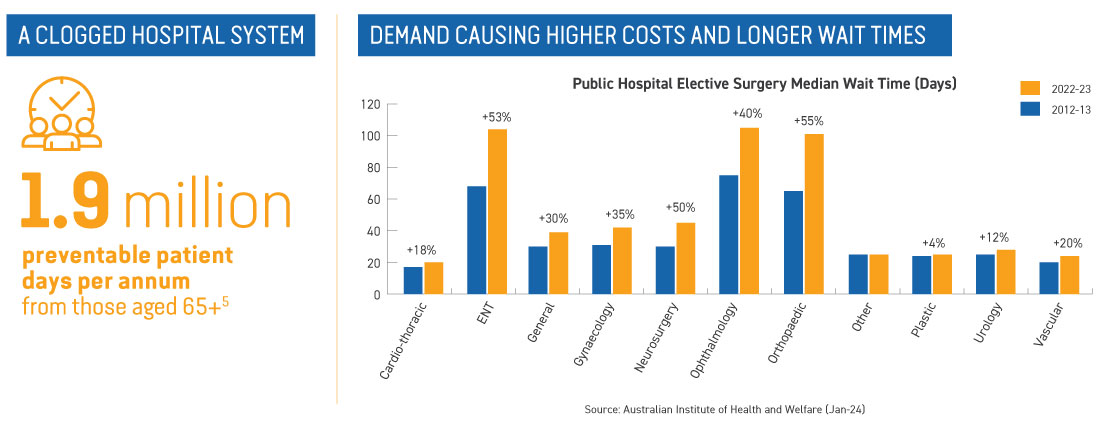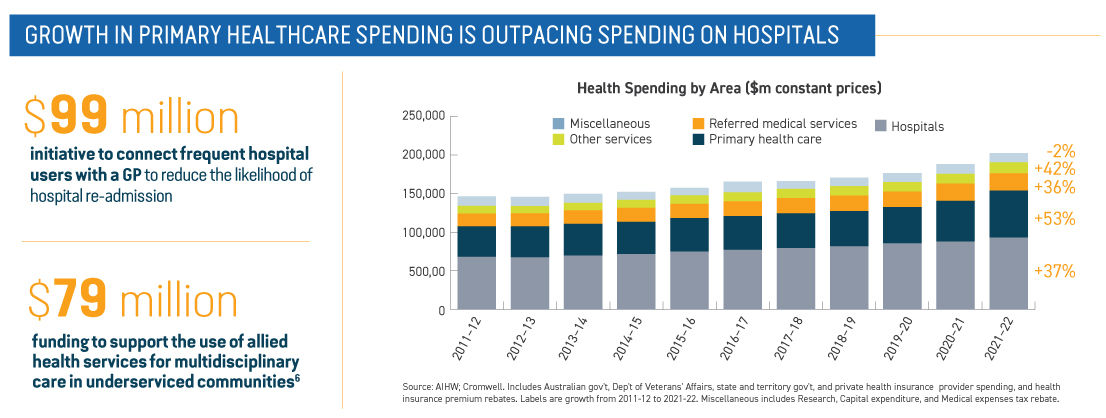Getting the right healthcare property exposure: why medical centres
Colin Mackay, Research and Investment Strategy Manager, Cromwell Property Group
Healthcare property encompasses a range of asset types such as hospitals, medical centres, and aged care facilities. As outlined in the previous article of this series, the healthcare industry is benefitting from several demand tailwinds. However, it’s not all smooth sailing, as evidenced by recent news of private hospital closures1. In this article, we’ll explain why we believe medical centres is the specific property segment investors should prioritise.
A necessary care model
As the population ages, the supply of health services is struggling to keep up with demand, resulting in higher costs and longer wait times. Inadequate financial and labour resources are available to improve care standards or wait times under the status quo – a more efficient and cost-effective system is required.

Part of the required shift includes moving treatment out of hospitals and towards GPs and other primary or secondary care facilities. Focusing on primary healthcare and out-of-hospital care can result in better health outcomes2, reduced risk of infection and improved patient comfort, convenience, and satisfaction3,4. From a funding perspective, out-of-hospital care can be cheaper due to lower overheads compared to when a hospital bed is occupied4.
Avoidable emergency department presentations are clogging the hospital system, with an estimated 1.9 million preventable patient days per annum from those aged 65+ alone5. It would be more appropriate to provide this care in an efficient, fit-for-purpose medical centre environment, saving costs and freeing up hospital resources for actual emergency care and complex cases.
The shift from hospital to non-hospital care is already underway and evidenced by growth in primary healthcare spending outpacing spending on hospitals, as well as government policies putting greater emphasis on primary care and preventive health. For example, the Federal Government has announced a $99m initiative to connect frequent hospital users with a GP to reduce the likelihood of hospital re-admission, and $79m in funding to support the use of allied health services for multidisciplinary care in underserviced communities6.



